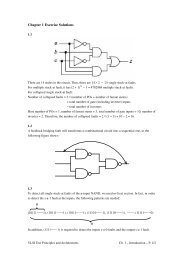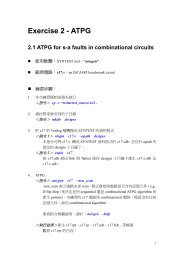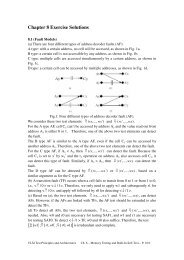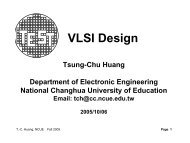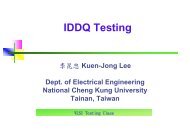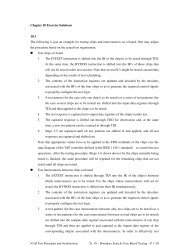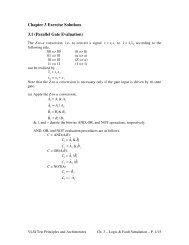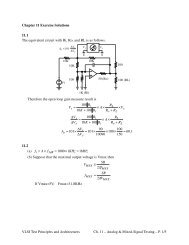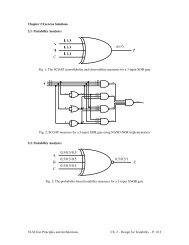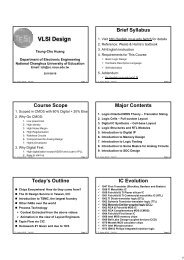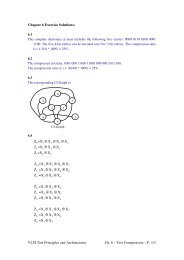36~chapter 04 atpg.pdf
36~chapter 04 atpg.pdf
36~chapter 04 atpg.pdf
You also want an ePaper? Increase the reach of your titles
YUMPU automatically turns print PDFs into web optimized ePapers that Google loves.
XNOR 0 1 D D X<br />
0 1 0 D D X<br />
1 0 1 D D X<br />
D D D 1 0 X<br />
D D D 0 1 X<br />
x X X X X X<br />
4.8 (D Algorithm)<br />
Initially, we place a D on b. The D-frontier at this time includes {d,<br />
e}. Next, we pick a D-frontier to propagate the fault effect across.<br />
Suppose we pick d. Then, the decision a=0 is made. At this time, the<br />
D-frontier becomes {x, e}. We pick the D-frontier that is closest to a<br />
PO. Thus, we pick x. The next decision is e1=0. This decision implies y=1<br />
and z=D. In other words, the fault-effect has been propagated all the way<br />
to the PO. The J-frontier consists of {e1=0, b= D }. To justify e1=0, c=0<br />
is sufficient. Justifying b= D is likewise straightforward, simply by<br />
setting b=0. Thus the vector abc=000 detects the target fault b/1.<br />
A similar decision process is made for the target fault e/0. However, in<br />
this case, one would conclude that the fault is untestable.<br />
4.9 (D Algorithm)<br />
The valid value combinations for gate g include:<br />
{Dxx, Dx1, D1x, D xx, D x1, D 1x, xDx, xD1, 1Dx, x D x, x D 1, 1 D x, xxD, x1D,<br />
1xD, xx D , x1 D , 1x D }<br />
4.10 (PODEM)<br />
VLSI Test Principles and Architectures Ch. 4 – Test Generation – P. 4/8



